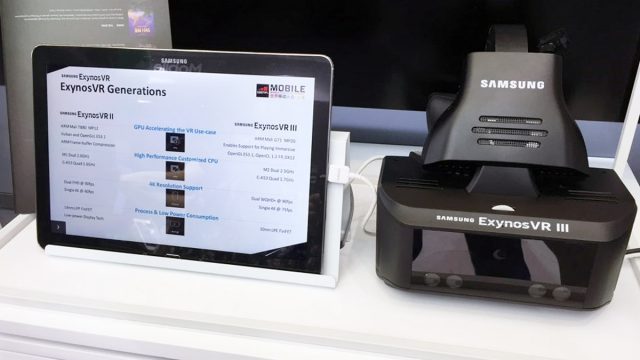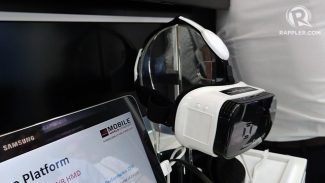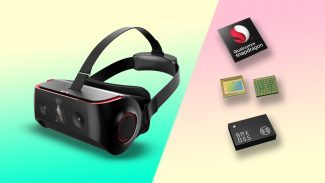Not to be left out of the reference design fun (with Intel, Qualcomm, and more already offering headset blueprints for others to build upon), Samsung has revealed its VR headset reference design.
Apparently the third in a series of standalone headset reference designs—which act as a foundation for other companies to build upon—the so-called ExynosVR III is the first that’s been widely revealed, while prior models have kept attention at bay with mostly behind-closed-doors showings.
The ExynosVR III was shown off at MWC Shanghai 2017 held over the last week. Visual Camp, a Korean firm focusing on eye-tracking technology, announced that its tech would be built into the headset. With eye-tracking, Visual Camp says foveated rendering could be employed.

The ExynosVR III is a standalone headset, which means it doesn’t rely on an external computer or attached smartphone to function; instead everything is built into the headset, including the processor, displays, and battery. The headset appears to be using Samsung’s latest Exynos 9 (8895) SoC, the same that powers the company’s flagship Galaxy S8 smartphone.
The ExynosVR III is captured in photos with a number of front-facing sensors which could be used for inside-out-tracking, though if so it’s unclear if Samsung is also providing an algorithm for the tracking or leaving that up to the client. Specs listed with the headset say it can support “dual WQHD+ @ 90 FPS” or “single 4K @ 75 FPS” displays, but it isn’t clear precisely which resolutions those refer to as it’s unlikely that a VR headset of this type would have dual widescreen displays.
 Also shown at MWC Shanghai is the lesser-specced (and likely older) ExynosVR II reference headset which is using an older-generation Exynos 8 (8890) SoC. Again the spec sheet lists supported displays as “dual FHD @ 90 FPS” and “single 4K @ 60 FPS,” but the exact resolutions are unclear.
Also shown at MWC Shanghai is the lesser-specced (and likely older) ExynosVR II reference headset which is using an older-generation Exynos 8 (8890) SoC. Again the spec sheet lists supported displays as “dual FHD @ 90 FPS” and “single 4K @ 60 FPS,” but the exact resolutions are unclear.
Both ExynosVR headsets are reference designs which means Samsung offers them up as blueprints for other companies to come along and build upon for their own product (generally with the goal of having that company be a customer of other Samsung tech—in this case their Exynos chips). It’s interesting that Samsung—which also makes the smartphone-based Gear VR headset—would announce their standalone VR reference headset ahead of announcing their own consumer-facing standalone VR headset.

It could be that Samsung doesn’t want Qualcomm and others to gain too much of a lead with their standalone VR headset reference designs (and thus had to get the word out, even if it didn’t fit their timeline. Or maybe the company doesn’t plan to make their own standalone VR headset as an end-consumer product, and would rather sell the internals while letting other companies commercialize them into a consumer headset. For now we’ll have to wait and see.







